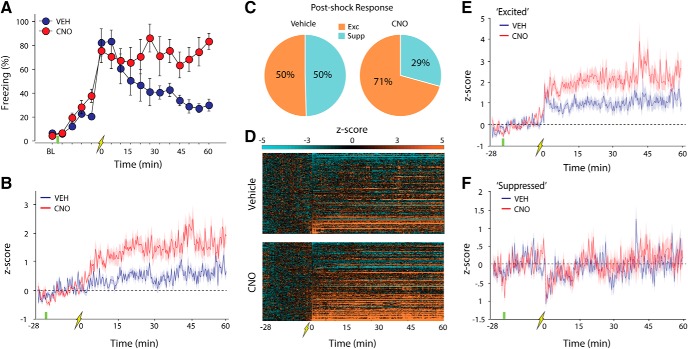Figure 3.
LC-NE activation paired with weak footshocks induces sustained freezing and increases BLA spike firing. A, Percentage of freezing (mean ± SEM) across the duration of the session split by drug group (VEH, n = 5; PROP, n = 5). Animals expressing hM3Dq in the LC that were treated with CNO (to activate LC-NE release) showed sustained freezing relative to vehicle controls (t = 0 is immediately after the last conditioning trial). B, Average firing rate over the course of the session split by drug treatment (20 s bins). Neurons recorded from vehicle-treated rats showed moderate increases in BLA firing, whereas CNO rats showed a marked increase in firing rate for the duration of the session. C, Pie charts showing the percentage of neurons (split by drug) that increased or decreased firing rate after the last conditioning trial. CNO treatment resulted in a larger proportion of recorded units showing increased firing rate in the postshock period. Exc, Excited; Supp, suppressed. D, Heat maps depicting normalized firing rate for every neuron recorded split by drug treatment. E, F, Average firing rate over time split by drug comparing excited and suppressed neuronal populations. CNO treatment produced a marked increase in the magnitude of excitation, but not inhibition, within the BLA.

